Hi Team,
In inLx flip mode, give inHx and inLx the same non-100% duty cycle PWM waveform. GHx output is always high and GLX can output flip voltage properly. Could you help check this case? Thanks.
Best Regards,
Cherry
This thread has been locked.
If you have a related question, please click the "Ask a related question" button in the top right corner. The newly created question will be automatically linked to this question.
Hi Team,
In inLx flip mode, give inHx and inLx the same non-100% duty cycle PWM waveform. GHx output is always high and GLX can output flip voltage properly. Could you help check this case? Thanks.
Best Regards,
Cherry
Hi,
Adding some figures as below:
The actual measured PWM waveform is shown below:
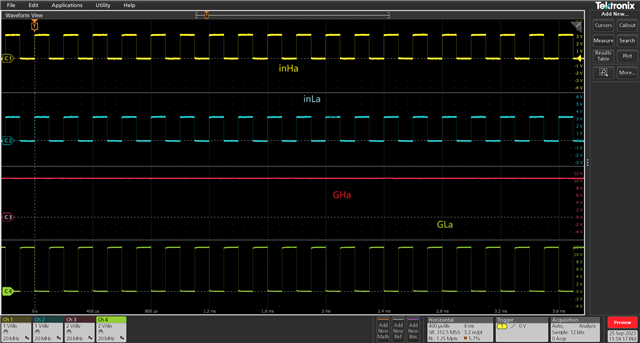
The theoretical waveform is as follows:
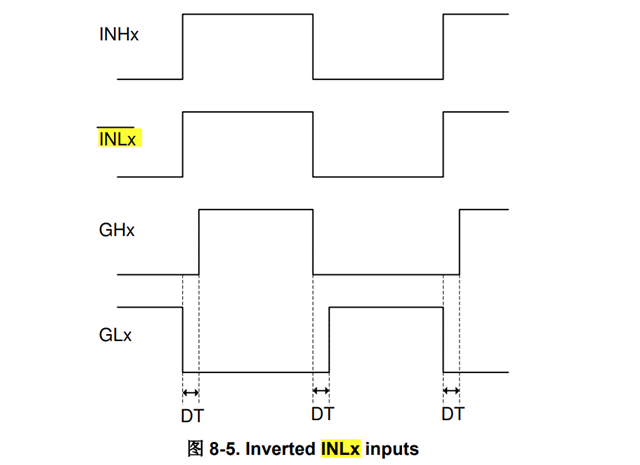
And please see the schematic:
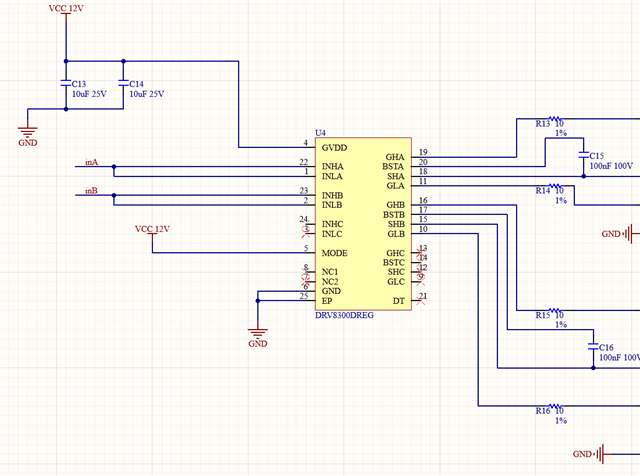
Thanks and Regards,
Cherry
Hi Cherry,
Thank you for your question.
Let me look into this circumstance and get back to you soon!
Best Regards,
-Joshua
Hi Cherry,
Thank you for your patience. A few questions I need answered to get a better understanding of the issue.
Why is the customer only using 2 phases of the driver?
Can you provide SHA voltage, GHA voltage, and GVDD to BSTx voltage?
Can you please provide a full schematic if possible? if a full schematic is not possible can you provide the FET being used?
Regards,
Yara
Hi Yara,
Thank you for the support.
Why is the customer only using 2 phases of the driver?
Only two phases are used because it is not the motor that is being driven, but instead it is powering a capacitor-like device. So only two phases are used to make a full-bridge drive circuit.
Can you provide SHA voltage, GHA voltage, and GVDD to BSTx voltage?
The voltage at SHA is approximately equal to GVDD (12 V) minus one tube voltage drop when no external circuitry is connected. The voltage of SHA changes with the external voltage after the external circuit is connected. SHA is fixed at 11 V when the voltage value exceeds GVDD.
The low potential output of GHA appears to be affected by the potential of SHA, and as SHA increases, the low potential of GHA increases with SHA as shown in the following figure:
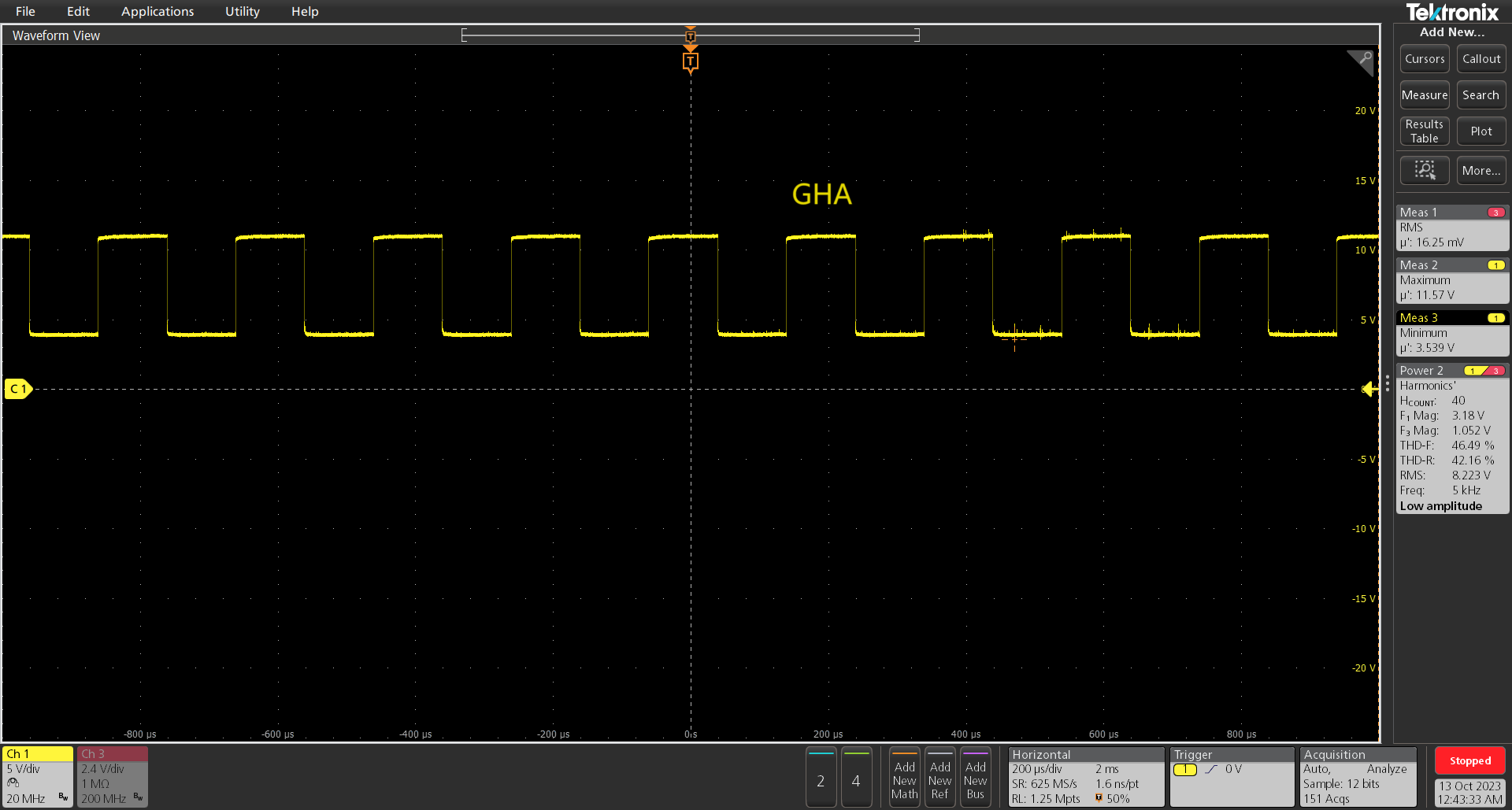
When SHA increases close to GVDD, the GHA becomes full high.
GVDD to VBST voltage is GVDD minus the tube voltage drop, which is around 11.3 V.
Can you please provide a full schematic if possible? if a full schematic is not possible can you provide the FET being used?
Please see the full schematic here:
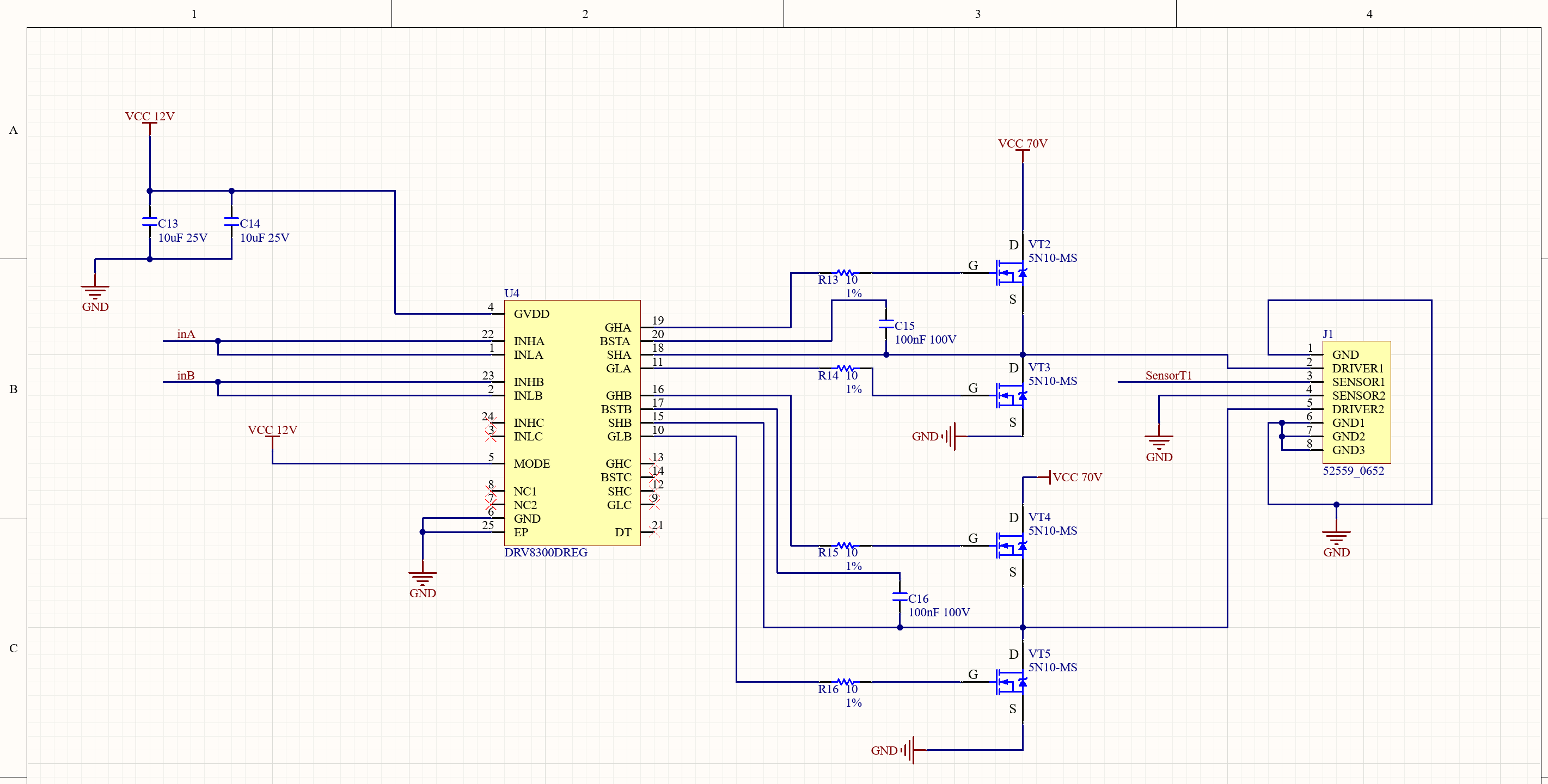
And the FET being used is 5N10-MS.
Thanks and regards,
Cherry
Hi Cherry,
Thank you for the schematic. I am having trouble understanding the issue.
Could you please provide waveforms for INHa to GND, BSTa to SHa, GHa to SHa, and SHa to GND. I am trying to understand the relationship between your input and outputs. It is important to measure GHa to SHa so I can see the behavior of GHa alone and compare that to the behavior of SHa to GND. Is it possible to get these waveforms on either 1 or 2 scopes?
Regards,
Yara